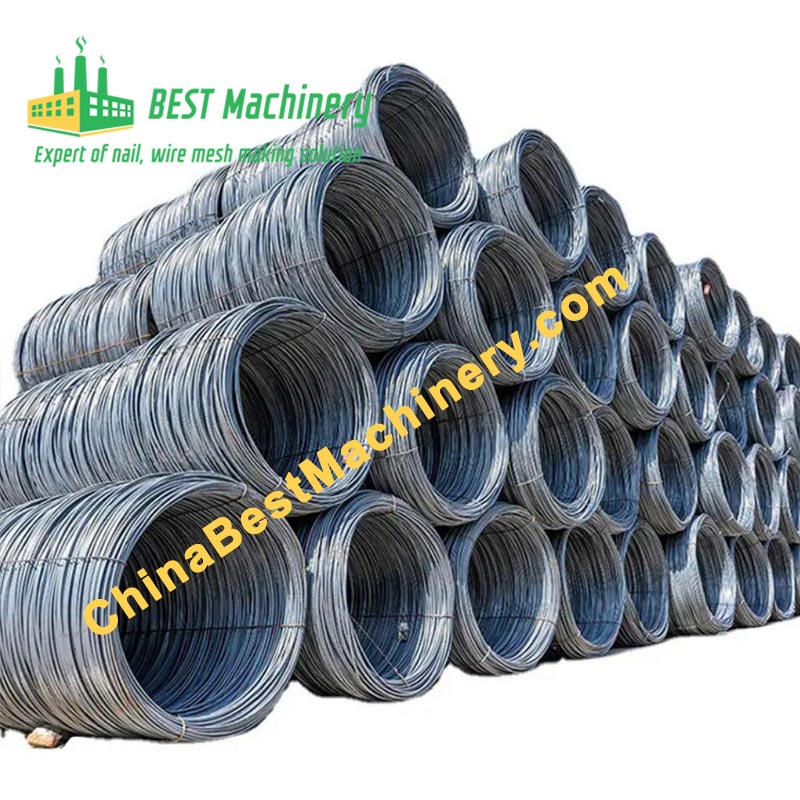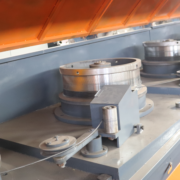Wire Drawing Process
The wire drawing process is a metalworking process used to reduce the cross-section of a wire by pulling the wire through a single, or series of, drawing die(s). Metal Wire Drawing is usually performed as a cold working operation. It is most frequently used to produce round cross-sections, but squares and other shapes are also drawn. Wire drawing is an important industrial process, providing commercial products such as electrical wire and cable; wire stock for fences; and rod stock to produce nails, screws, rivets, and springs.
The History of Stainless Steel Wire Drawing

Stainless steel wire drawing has been around for centuries, with the ancient Egyptians using it to create intricate jewelry. However, the modern process as we know it today was not developed until the 19th century. During this time, advances in technology allowed for greater precision and control in drawing wires from stainless steel.
In 1830, a German engineer named Ernst August Geitner invented the first wire-drawing machine capable of producing fine wires with high accuracy. This early machine used a series of pulleys and gears to draw wires through progressively smaller holes until they reached their desired size.
Over time, advancements in materials and machinery have led to even more sophisticated wire-drawing techniques. Today’s manufacturers use computer-controlled machines that can draw stainless steel wire down to incredibly small diameters while maintaining precise tolerances.
Overall, the history of stainless steel wire drawing is one characterized by innovation and refinement. As materials science continues to advance alongside cutting-edge technologies like artificial intelligence and automation, we can expect even more exciting developments in this field in the years ahead.
Advantages of wire drawing
Wire drawing, Making of wire, generally from a rod or bar. The wire-drawing process consists of pointing the rod, threading the pointed end through a die, and attaching the end to a drawing block. The block, made to revolve by an electric motor, pulls the lubricated rod through the die, reducing it in diameter and increasing its length. Fine wire is made by a multiple-block machine because the reduction cannot be performed in a single draft.
Advantages of wire drawing include:
(1) Close dimensional control.
(2) Good surface finish
(3) Improved mechanical properties such as strength and hardness.
(4) Adaptability to economical batch or mass production.
Drawing speeds are as high as 50 m/s (10,000 ft/min) for very fine wire.
In the drawing, reductions in the cross-sectional area per pass range up to about 45 %.
Usually, the smaller the initial cross-section, the smaller the reduction per pass.
Fine wires are usually drawn at 15 to 25% reduction per pass and larger sizes at 20 to 45%.
A light reduction (sizing pass) may also be taken on rods to improve their surface finish and dimensional accuracy.

Drawn Wire
At Best Machinery Co., Ltd., we manufacture premium quality custom wire products for customers in a wide range of industries. Our wire drawing capabilities include the ability to produce wire between 10 microns and 1 mm in diameter using precision drawing dies. The quality of the dies that are used in the wire drawing process has a direct impact on the precision and consistency that can be achieved in the final product. All of our dies are polished in-house by experienced craftsmen who take pride in the quality and precision of their work.
Everything we manufacture is custom, freeing customers to select the exact alloy, diameter, and packaging method to best suit their given application. Aluminum, copper, resistance wire, and precious metal alloys are only a few of the available material options. Contact us for the full range of alloys and wire material choices that are available. In addition to custom wire drawings, we can redraw standard products provided by the customer to improve the roundness of the wire for precision applications. Our “ultra finish” option provides the best surface finish and meets the tightest diameter tolerances in the industry. Precision diamond dies are used in the final drawing process to create an ultra finish on the wire.
Custom wire can be drawn in any quantity and packaged on spools or cut to length, depending on the application.


